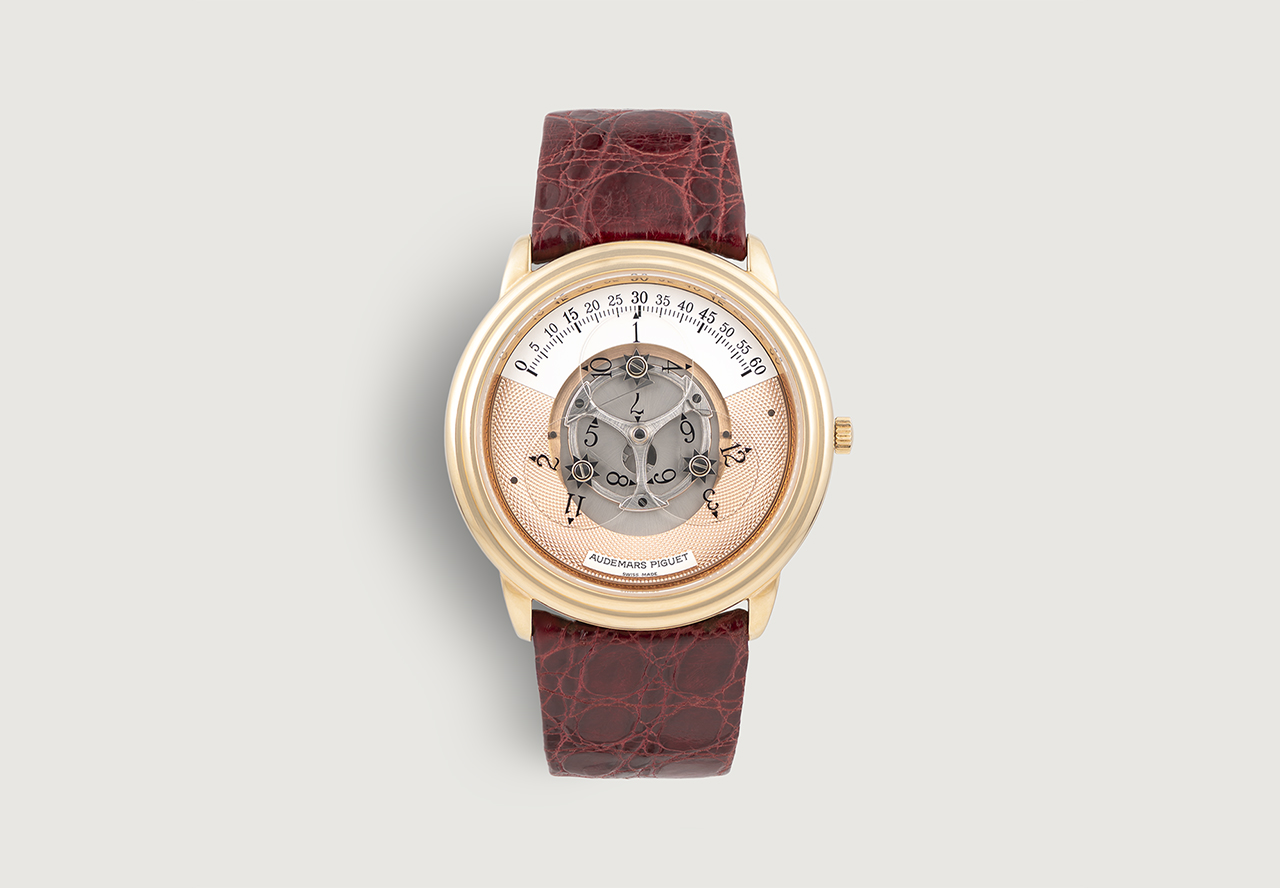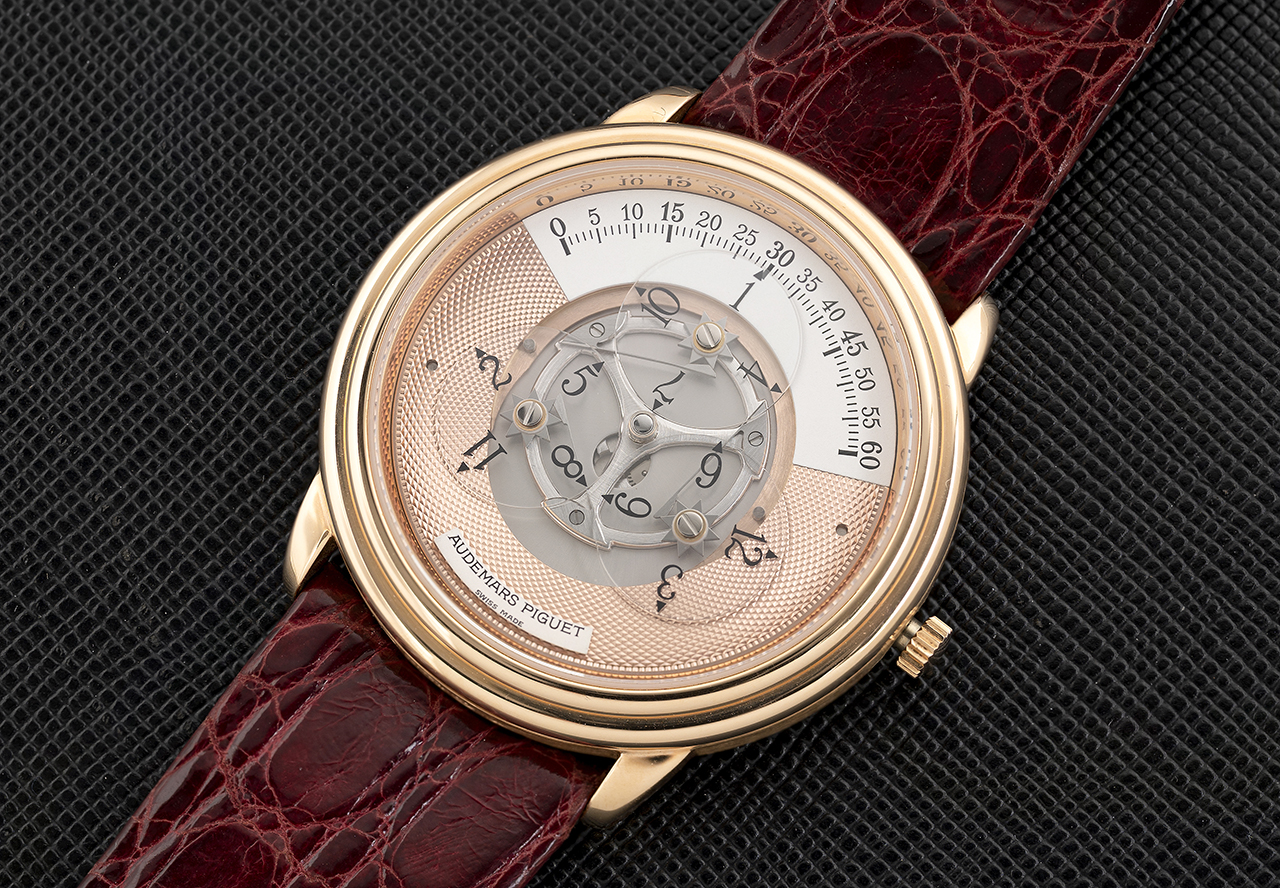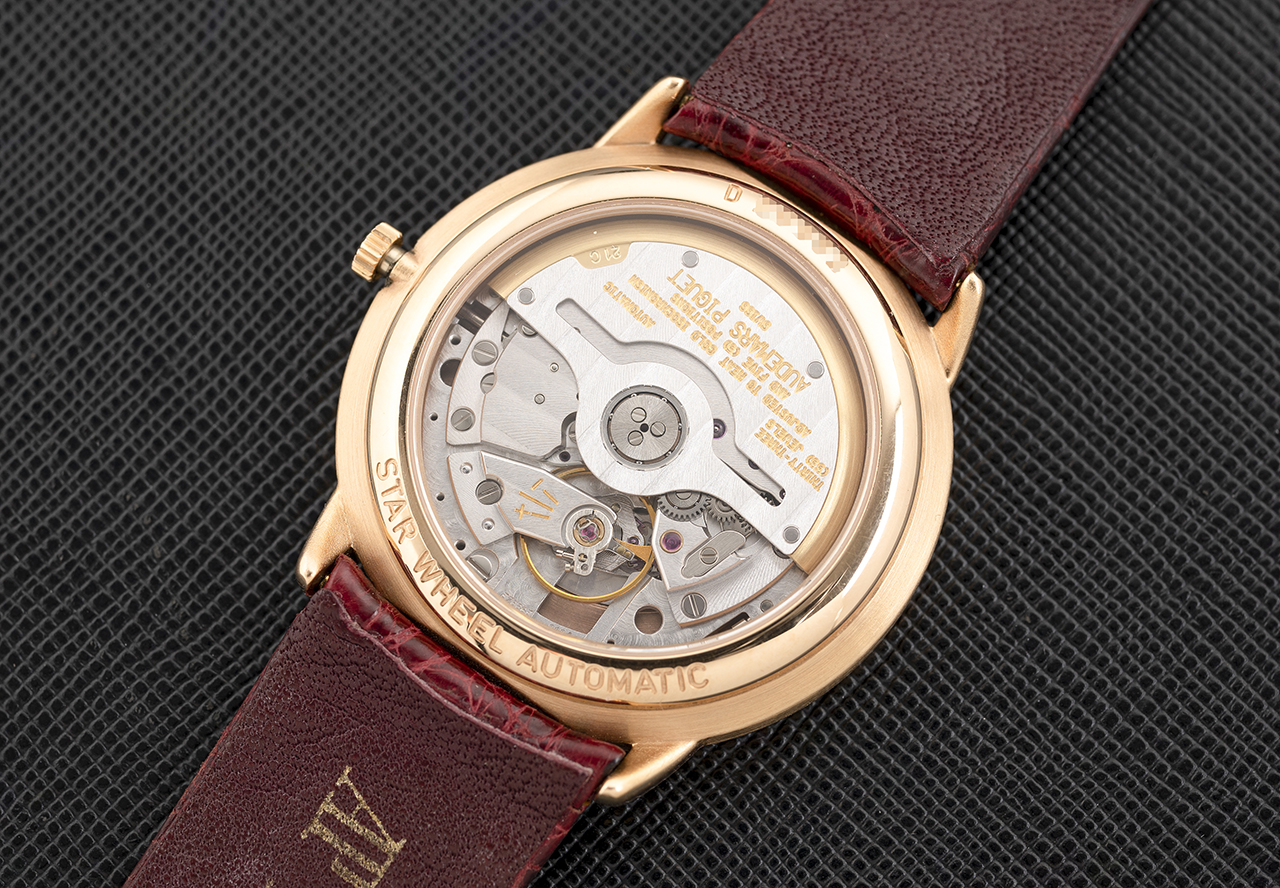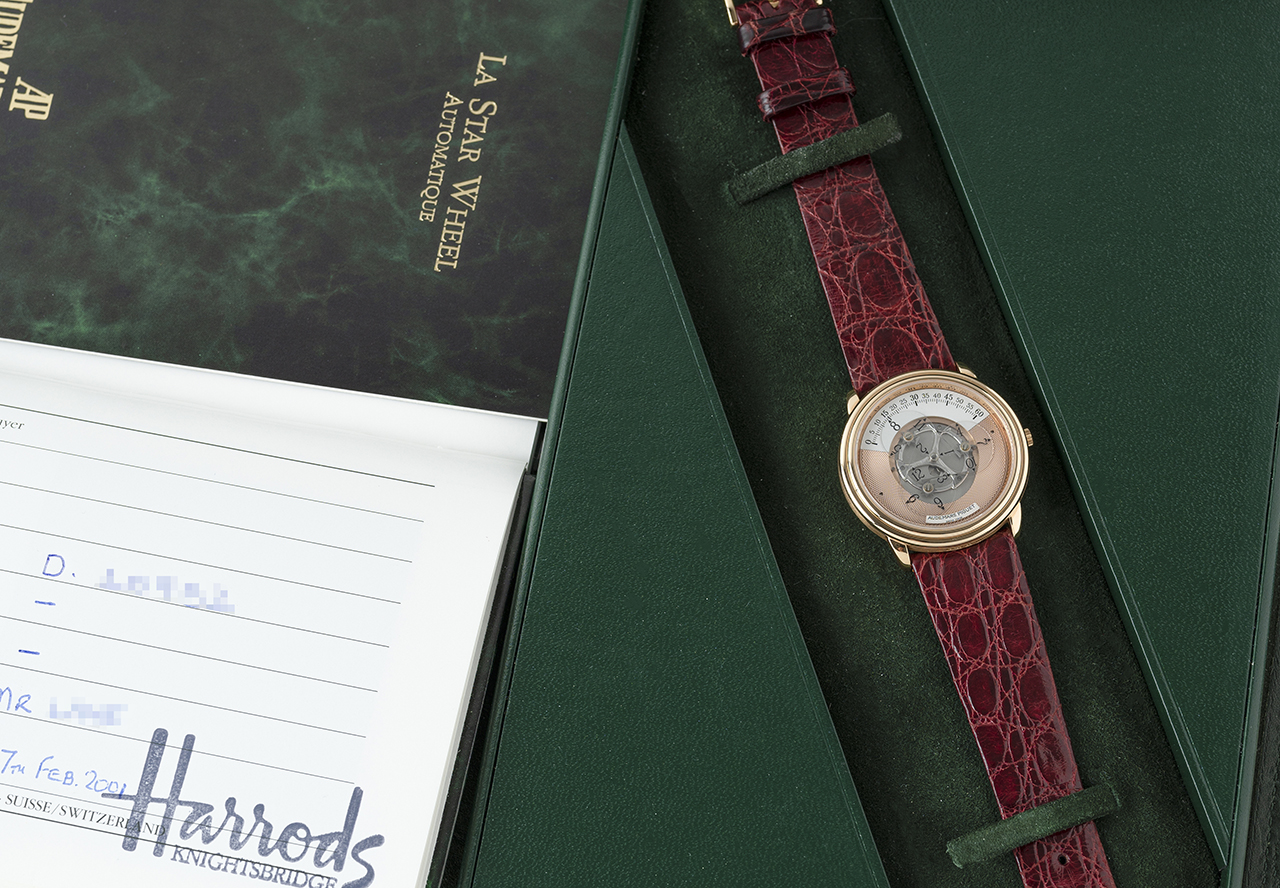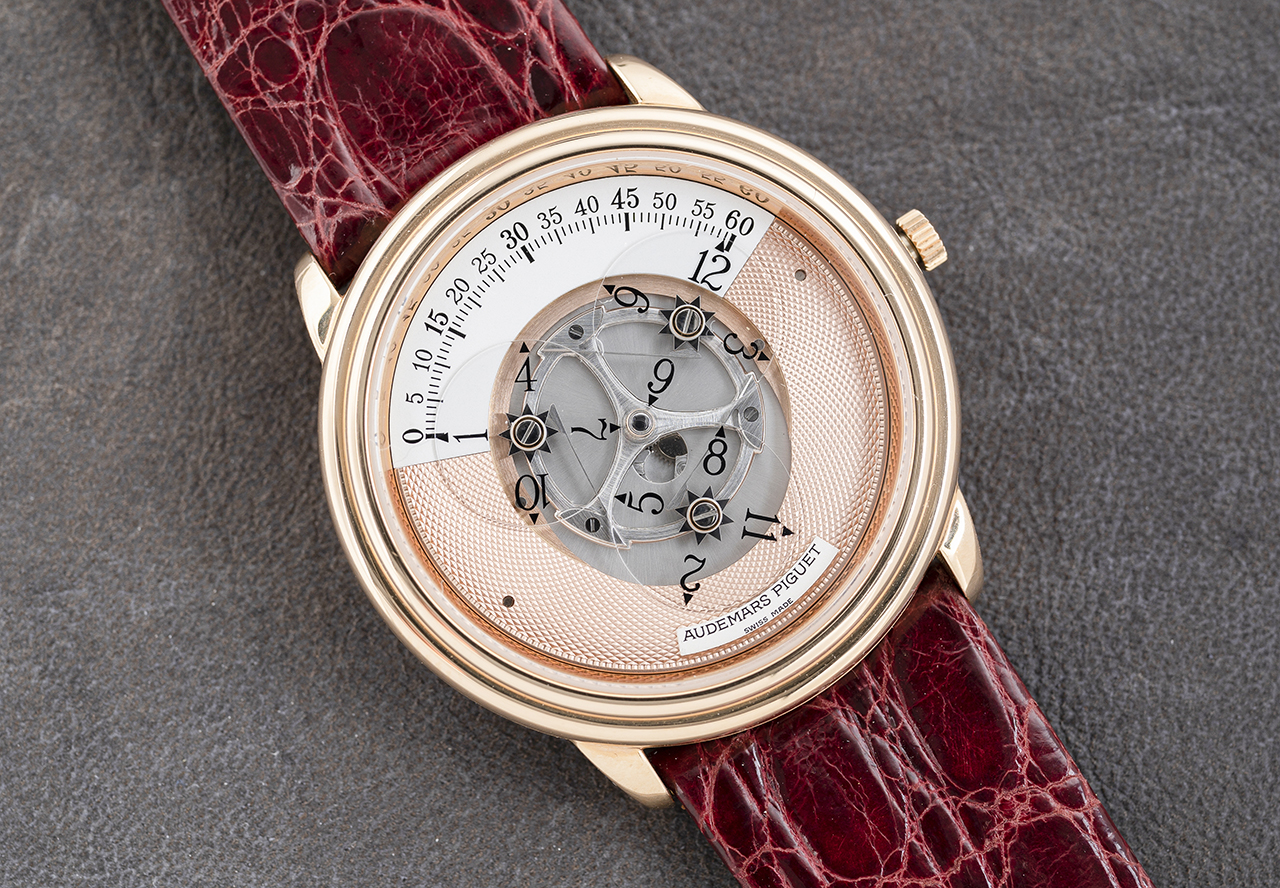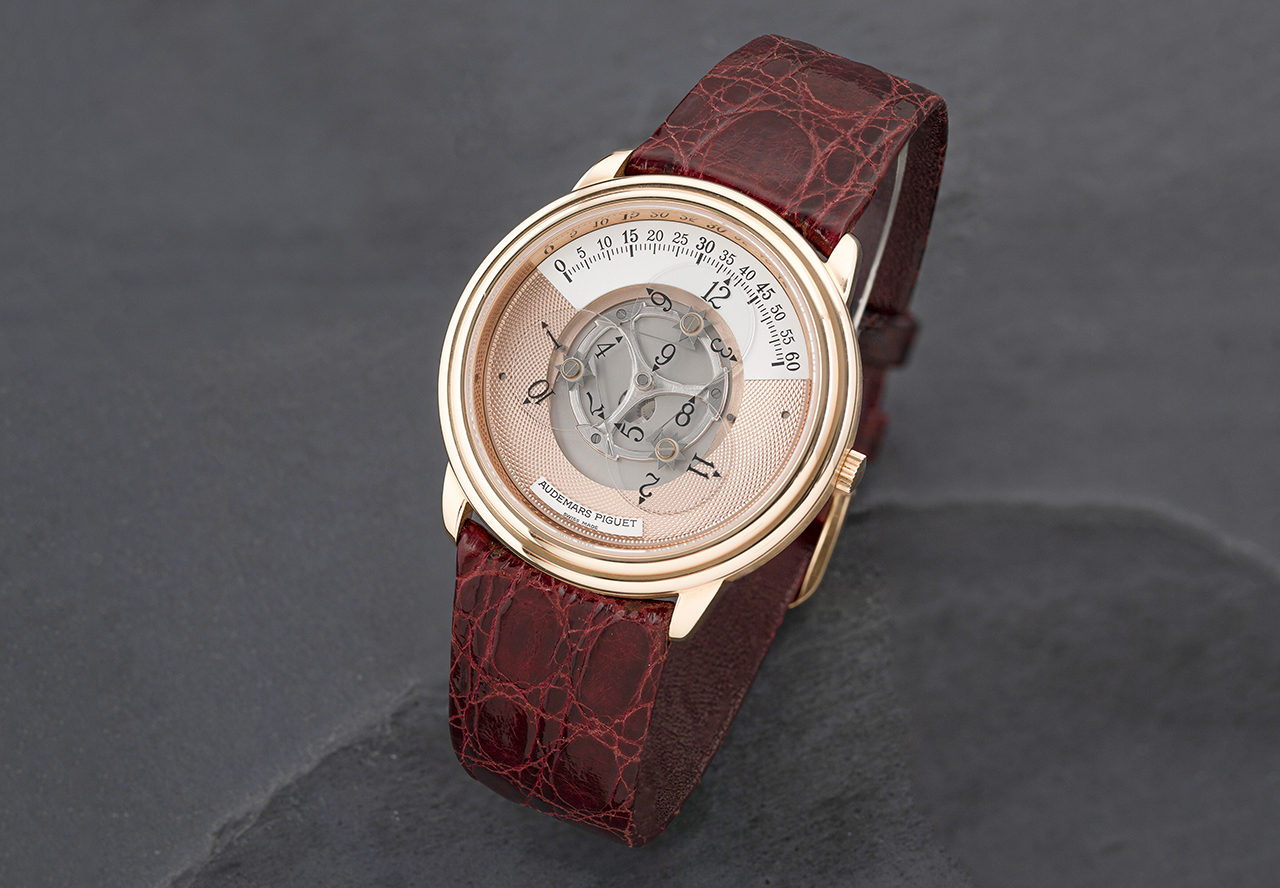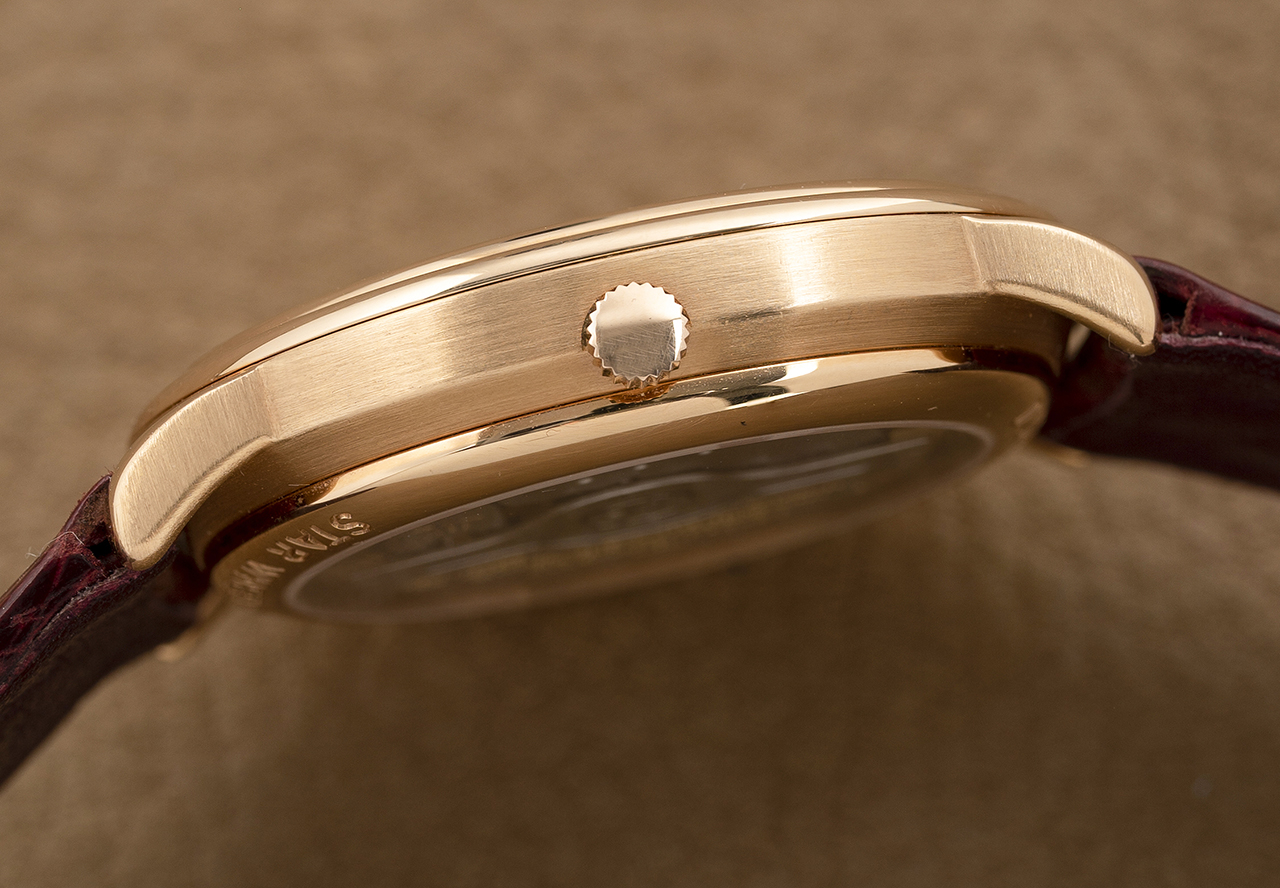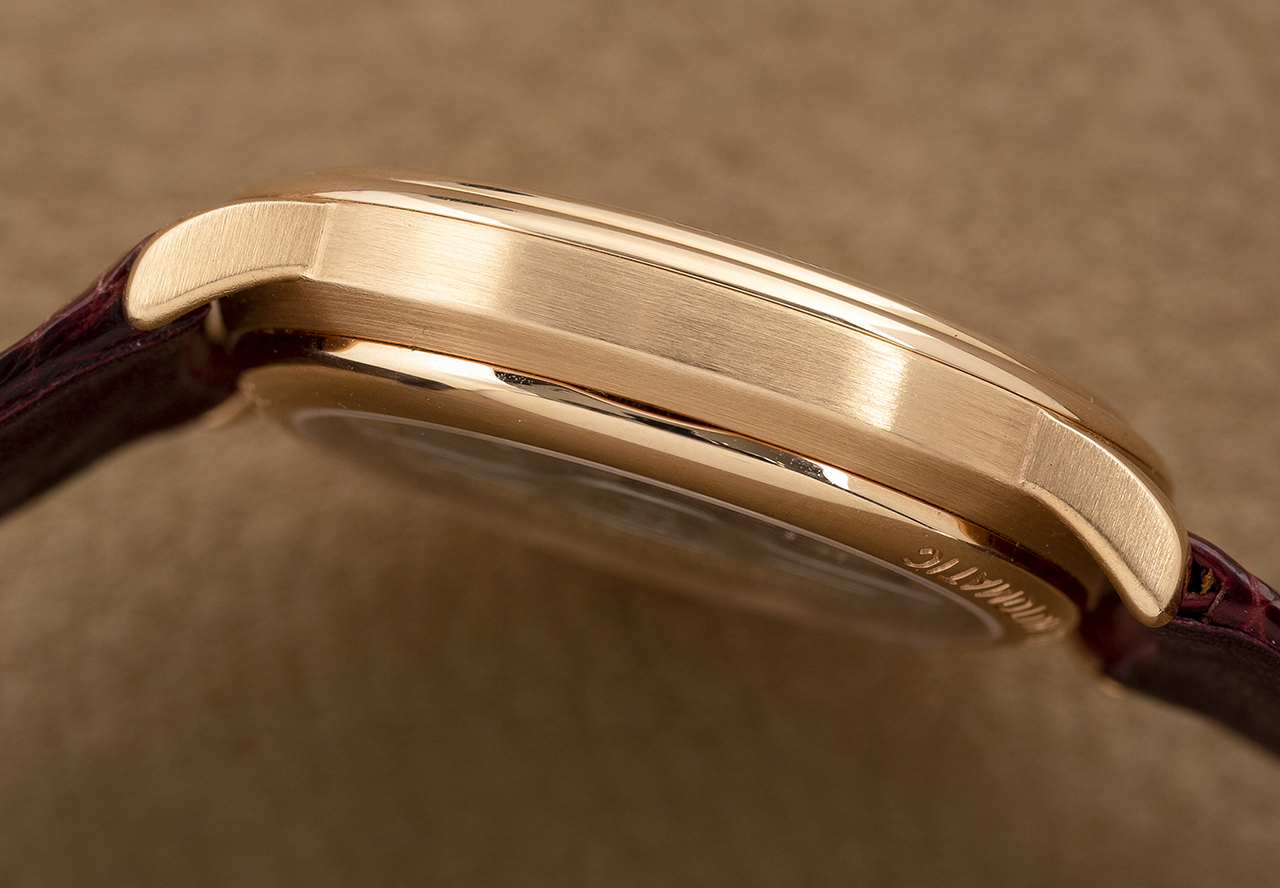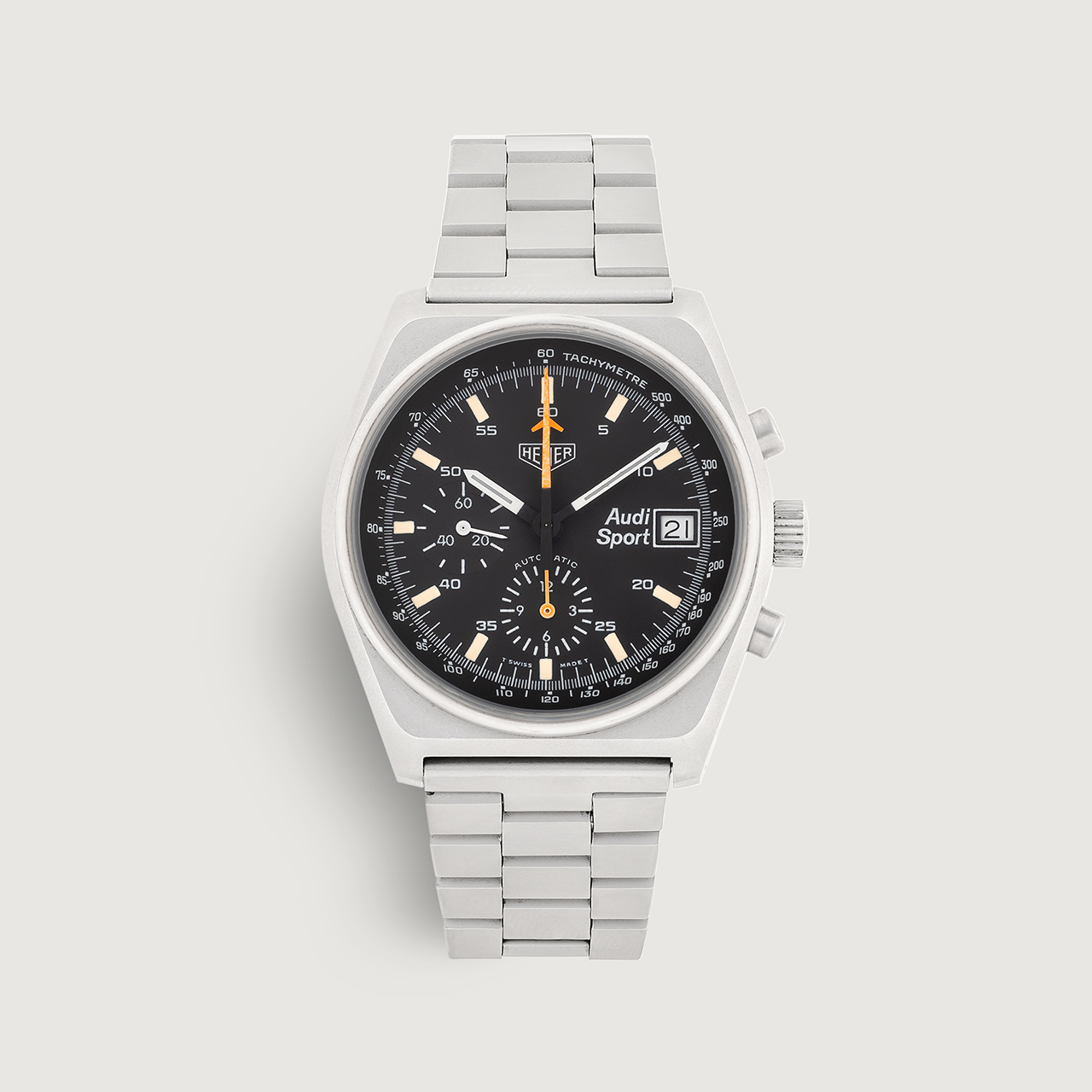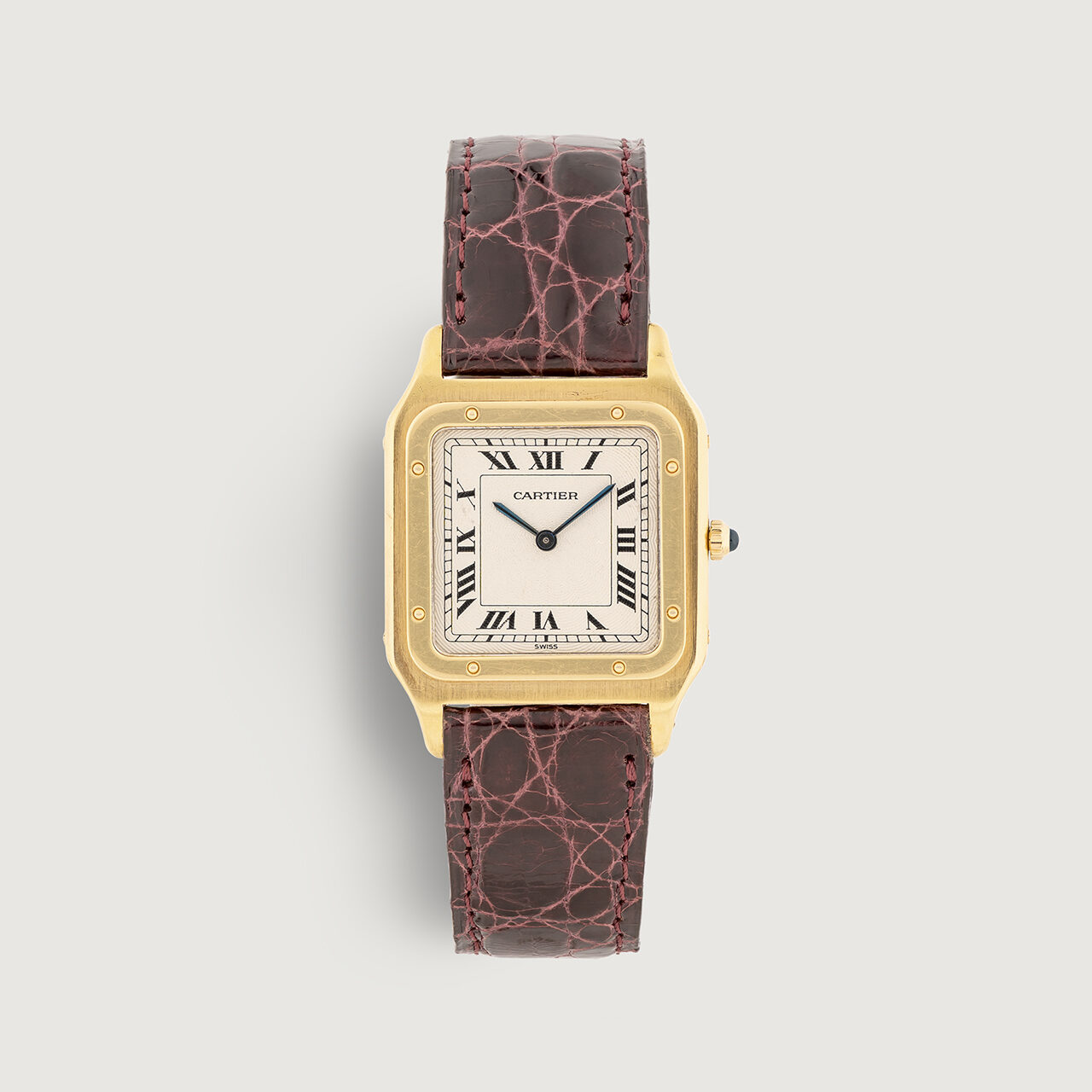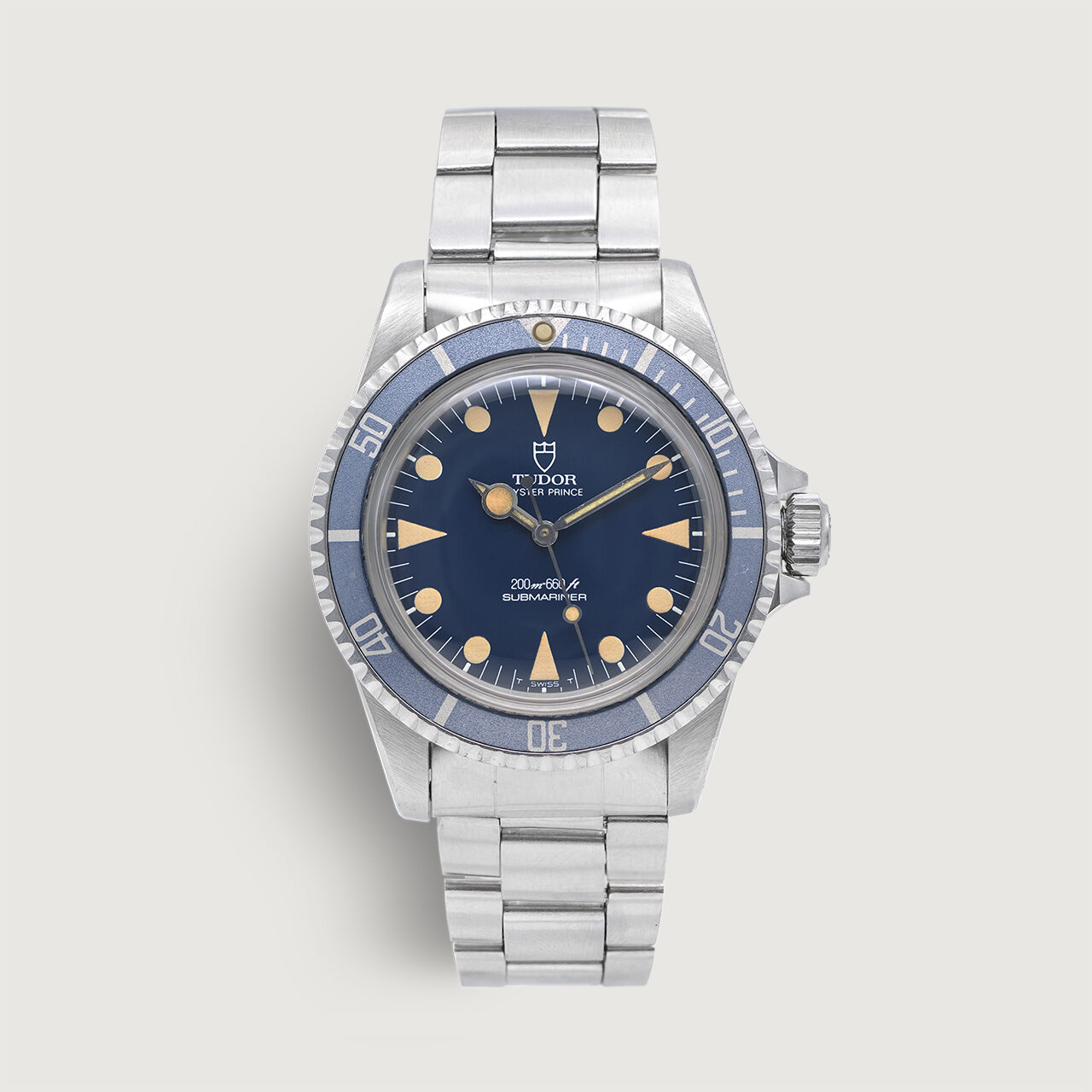Audemars Piguet Star Wheel 25720OR
SOLD
Out of stock
DETAILS
Audermars Piguet are known for breaking the rules but of course this is something they’ve only done once all else has been mastered. AP Are known for pushing the boundaries and creating some unusual avant-garde timepieces. The Royal Oak can loosely be seen as pushing the boundaries when you consider it was released during the Quartz crisis. A time when Swiss manufacturers were coming to terms that mechanical watchmaking might be coming to an end. Did this deter AP from making one of of the most expensive luxury steel sports watches the industry had ever seen? No. While the Royal Oak is iconic, I believe what we have here on offer today is equalling intriguing. Nicknamed the “Star Wheel,” the ref. 25720OR has influenced modern brands like Urwerk with its unique layout and thus grown a cult following for its place within AP’s hallowed halls as yet another industry trend that they can lay claim. Launched in 1999, the Audemars Piguet ref. 25720OR “Start Wheel” was a somewhat unusual timepiece in the 90s – especially considering that there was a growing trend toward sports. The “Star Wheel” took its inspiration from the wandering hours complication that date back to the 17th century, the Star Wheel displays the time of day by using three sapphire disks that rotate along the top of the dial. The minutes are displayed linear track on the upper third quadrant of the dial, highlighted by the white backdrop, which contains the a black minute track. Hovering over this track are the satellites which contain the hours. As each hour passes over the chapter ring, on then does the time become apparent, with the next hour slowly taking the previous hours’ spot along the chapter ring. The “Star Wheel” was produced in very limited quantities in various metals, with the rose-gold being among the rarest. It features a stepped bezel, with all-round polished surfaces and a petite wind-crown. The case measures 36mm in diameter and features a beautiful guilloche rose-gold hobnail pattern from 2 through to 10 o’clock. This “Star Wheel” is powered by an automatic cal. 2224, which can be observed via the exhibition case back. The attention to detail from the dial side is carried over through to the movement.
| LOCATION | London – UK |
|---|---|
| BRAND | Audemars Piguet |
| MODEL | Star Wheel |
| YEAR | Sold in 2001 |
| REFERENCE | 25720OR |
| MATERIAL | 18-Carat Rose-Gold |
| MOVEMENT | Self-Winding Calibre 2224 |
| CASE DIAMETER | 36mm |
| BRACELET/STRAP | Burgundy Leather Strap w/ Pink-Gold Pin Buckle |
STORY BEHIND
The origins of the Audemars Piguet Star Wheel is a rather peculiar one, when one thinks back to when this timepiece was first introduced – you’ve got to take into account it was done so against the backdrop of the Quartz crisis. You see, while most brands were scrambling thinking of ways to avert this crisis, Audemars Piguet ushering in a new era of luxury sports steel watch: the iconic Royal Oak, this wasn’t only thing they were doing. The watchmakers in Le Brassus were developing ultra-thin perpetual calendars and tourbillons, housed in super-thing cases – such as the calibre 2870/reference 25643.
Introduced in 1989, the Star Wheel collection featured an unusual time indication via the star wheel complication. Three sapphire disks with printed hours rotate on a centre wheel, with the hour pointing the minutes on the upper portion of the dial. The automatic Audemars Piguet Star Wheel was available in yellow-gold, pink-gold, stainless-steel and platinum.
While the Star Wheel wasn’t particularly complicated or an entirely new concept, the fact that it incorporated an unusual way of reading the time as well as boldness and extra-thin qualities, this made the Star Wheel standout from the crowd. The Star Wheel featured classic watchmaking qualities, however, the way in which you read it’s time display meant you had to gaze into its dial, allowing the wearer to fully appreciate its beauty.
Inspired by a 17th-century papal clock, the Star Wheel was not only off-piste but produced in small quantities and was never expected to compete with the Royal Oak. In a way, it never did and was discontinued within five years of its launch. However, the brand’s unique take on the wandering-hours display kept showing up sporadically in its more unusual lines, produced in limited numbers – all the way until 2000 – the year the Le Brassus watch manufacture celebrated 125 years of watchmaking.
